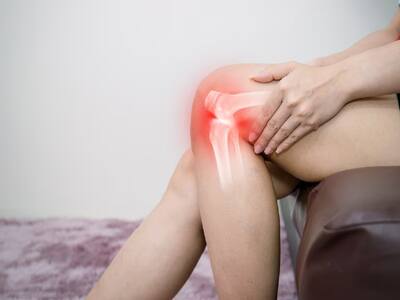
Three main factors driving the rapid increase in osteoarthritis cases worldwide are aging, population growth and obesity.
Osteoarthritis is the most common form of arthritis, affecting 15 per cent of the global population over the age of 30. Concerningly, a new study has predicted that by 2050, nearly 1 billion people will be living with osteoarthritis. As per the study published in The Lancet Rheumatology, osteoarthritis cases increased rapidly over the past three decades driven by three main factors: aging, population growth, and obesity.
The study was led by the Institute for Health Metrics and Evaluation (IHME), Washington, US, as part of the Global Burden of Disease Study 2021. The research team analyzed 30 years of osteoarthritis data (1990-2020) covering more than 200 countries.
In 1990, 256 million people were living with osteoarthritis. In 2020, 595 million people were found to be affected by osteoarthritis, a 132 per cent increase from 1990. By 2050, this number is projected to reach almost 1 billion.
Unfortunately, there is currently no effective cure for osteoarthritis. Therefore, it is important to focus on strategies of prevention, early intervention, and effective and affordable treatments, Dr. Jaimie Steinmetz, lead research scientist at IHME, stated.
Can osteoarthritis be prevented?
Dr. Prashanth B N, Consultant Orthopedics, Robotics& Joint Replacement Surgery, Narayana Health City, Bangalore, says, “Osteoarthritis is a degenerative joint disorder that arises when the protective cartilage cushioning the ends of bones wears down over time. While genetics play a role, maintaining an active lifestyle with regular low-impact exercise can help prevent its onset. Balanced nutrition, with an emphasis on Omega-3 fatty acids and vitamin D, aids in strengthening joints and bones.”
Who is more susceptible to developing osteoarthritis?
Dr. Prashanth replies, “Unfortunately, age, gender (females more often), joint injuries, and obesity contribute to higher susceptibility. Occupations requiring repetitive joint stress or heavy lifting, joint stress like climbing stairs can exacerbate the condition. Joint misalignment, inflammation, and wear-and-tear from everyday use can lead to its development.”
Early intervention, through weight management, physiotherapy, and the use of assistive devices, when necessary, can alleviate symptoms and enhance the quality of life, he adds.
READ RELATED: Fasting Tips: Foods You Can Eat During Fasts For Healthy and Glowing Skin
Osteoarthritis affects more women than men. Know why
More women than men are affected by osteoarthritis. In 2020, women accounted for 61 per cent of osteoarthritis cases compared to 39 per cent in men. There is a combination of possible reasons behind this gender difference.
Genetics, hormonal factors, and anatomical differences are thought to play a role in gender differences in osteoarthritis prevalence.
Obesity is an important risk factor for osteoarthritis
The study suggested that the osteoarthritis burden can be reduced by 20 per cent if obesity, which is an important risk factor for osteoarthritis, is effectively addressed in the global population.
In 1990, obesity was associated with 16 per cent of the disability due to osteoarthritis, which increased to 20 per cent in 2020.
Total Wellness is now just a click away.
Follow us on
Don’t Miss Out on the Latest Updates.
Subscribe to Our Newsletter Today!
window.addEventListener(‘load’, (event) => {
$(‘#commentbtn’).on(“click”,function(){
(function(d, s, id) { var js, fjs = d.getElementsByTagName(s)[0]; if (d.getElementById(id)) return; js = d.createElement(s); js.id = id; js.src = “//connect.facebook.net/en_US/sdk.js#xfbml=1&version=v2.3”; fjs.parentNode.insertBefore(js, fjs);}(document, ‘script’, ‘facebook-jssdk’));
$(“.cmntbox”).toggle();
});
});









